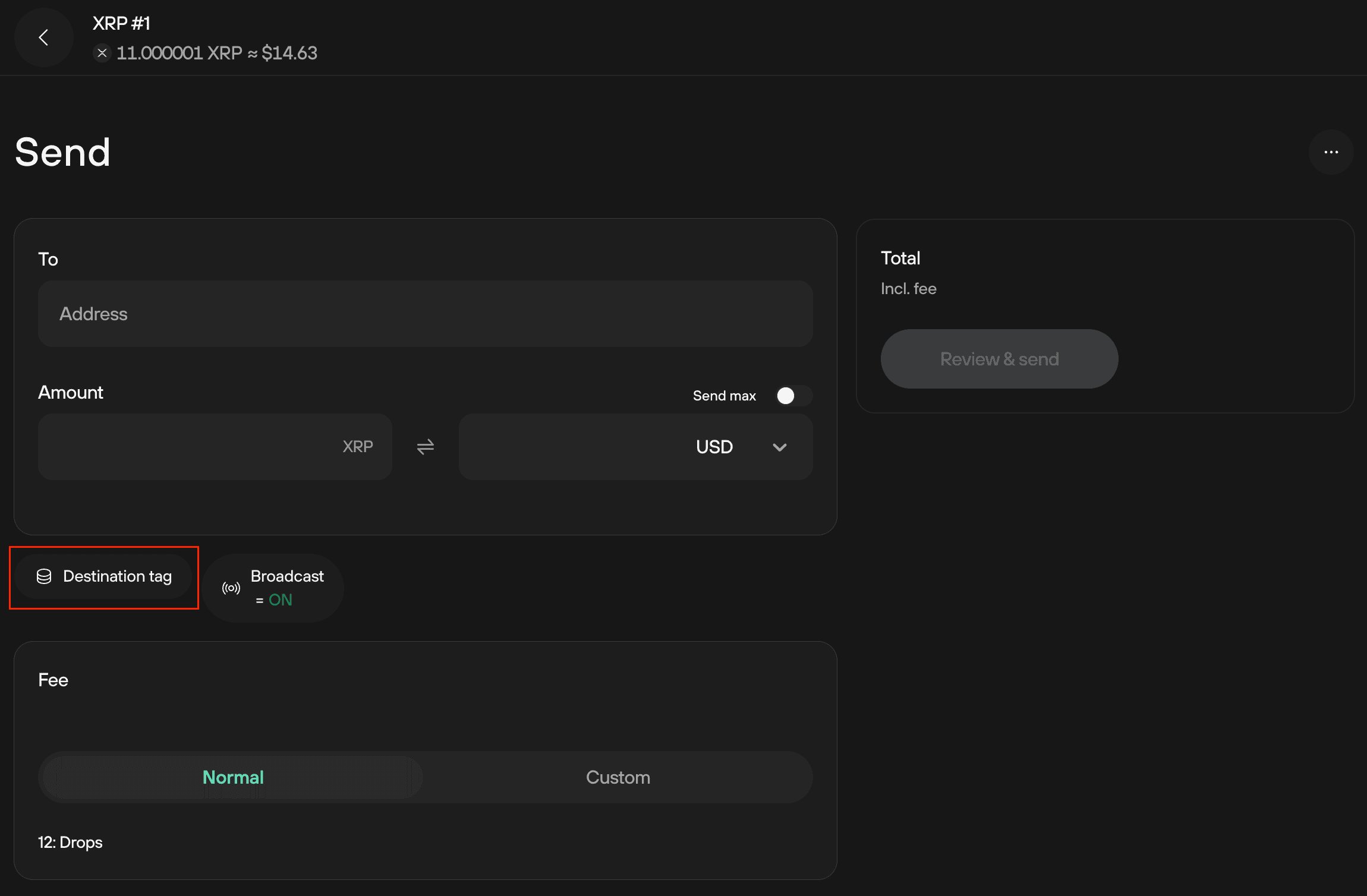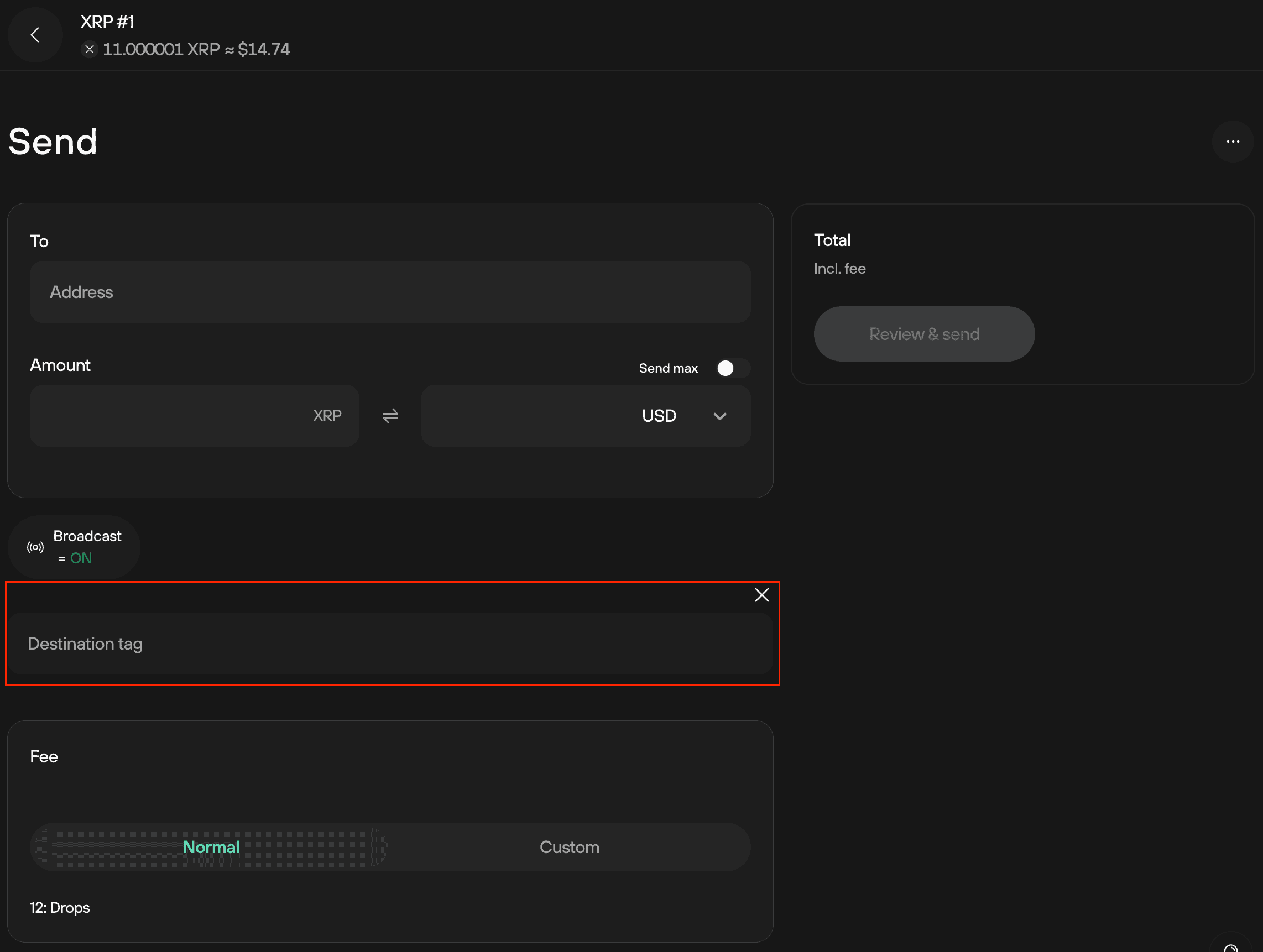XRP on Trezor Devices
XRP Ledger, often also referred to as Ripple, is a real-time gross settlement system (RTGS), currency exchange, and remittance network created by Ripple Labs Inc.
Ripple's native currency is XRP. There are a total of 100,000,000,000 XRP, all of which were created at launch. No new XRP can be issued. Over time, the supply decreases slightly because a small amount of XRP is permanently as a fee for every transaction.
The smallest unit is a drop (10⁻⁶ XRP). Transaction fees are measured in drops, and the network dynamically adjusts minimum fees based on demand.
Overview
XRP Ledger is based around a consensus process that facilitates payments, exchanges, and remittances in a distributed system. The native token of the ledger is known as XRP.
XRP is supported on all Trezor Safe Family and Trezor Model T devices.
With XRP Ledger, users make payments between each other by using cryptographically signed transactions denominated in either fiat currencies or internal tokens (XRP).
For XRP-denominated transactions, XRP Ledger can use its internal ledger.
For payments denominated in other assets, the XRP Ledger only records the amounts owed, with assets represented as debt obligations. The mechanism of making payments by means of a network of trusted associates is referred to as "rippling."
Base reserve
The XRP Ledger applies reserve requirements for every address on the ledger. To use a new XRP address, at least the minimum required amount of 1 XRP must be sent to that address.
Once you transfer the 1 XRP minimum reserve amount to a new address, you will not be able to move it elsewhere while using Trezor devices.
Memo / destination tag
A memo or destination tag is a unique identifier intended for the recipient of the transaction. Similar to a “Payment ID” used by Monero, or a regular “payment reference” in bank transfers, this number is essential for identifying the origin of the transaction.
You must use the destination tag when sending XRP to exchanges or vendors which require it to pair your payment. In such cases, the tag is provided by the receiving party.
If you're sending XRP to an exchange, a memo/destination tag may be required — always confirm with the exchange beforehand.
Failure to include the tag when required could result in losing your funds.
The tag will typically be displayed alongside the deposit address. We recommend testing with a small amount first.
Destination tags are not required when receiving XRP into Trezor Suite.
If you're asked to input a tag during a withdrawal Trezor, you can use any number (e.g., "12345").
Funds will appear as long as they are sent to the correct address shown on your Trezor device.
When sending an XRP transaction, the destination tag can be included by clicking the Destination tag button on the Send page of your XRP account.

A text box will appear where you can paste or type the tag provided by the recipient.

Below is an example of a destination tag provided by the Bitstamp exchange for a user making an XRP deposit:
